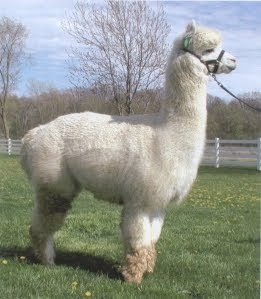For those who think I have gone totally balmy talking about a 'Tour de Fleece' - no, I haven't.
The Tour de Fleece is a spinning competition that runs alongside the Tour de France, and this year started on 4th July and ending on the 25th July, with the same rest days in between. The idea of the competition is to give yourself a goal with spinning, whether it be just sitting for longer at your wheel, creating a new designer thread, spinning that kilo of fleece you've been putting off, or sitting and watching the Tour de France and spinning at the same time. Prizes were awarded in different areas of spinning at the end of the competition.
For me, to sit and spin at the same time as watching the Tour de France, it was late at night as France is a long way from Australia and the time zone is hours apart - but it was fun and it did happen...
Those who enter the Tour de Fleece, and there ended up being about two and half thousand members on that Ravelry forum, it was be an exciting three weeks. All the more so if you live in France somewhere along the tour route. Weather permitting, spinning could be undertaken on the side of the road as the cyclists pass - now That would be different and something to keep in mind should I have the opportunity to be in France at that time.
Somehow, I've ended up as team leader and as I'd never entered an event like this, or led a team before, it was a first for me and thoroughly enjoyed taking part. The Tour de Fleece has been going for a few years and seems to be growing each year. Spinning is becoming more popular and in France especially, its entered a 're-birth' as more people are again starting to spin.
It is truly an International Event in the crafting world, with some amazing results. Spinners from all parts of the globe took part, making friends, challenging themselves, and winning lots of lovely prizes.
Whether you spin on a wheel or a spindle, the fun is taking part and setting yourself your own goals for Le Tour. The colours, textures, amounts, the dyeing, the fleeces, it all adds up to one huge event. It must be the only event in the world where so many people get together and work for a common goal. Even the Olympics doesn't get this much coverage - most people cannot 'take part' in that event, only watch.
One of the best parts of this competition is the making of new friends, in all parts of the world. I am a member of quite a few groups on Ravelry, but one group in particular has caught my attention - Spinners of France. Maybe because I love that country, and its people, that I have become somewhat addicted to learning French for when I am over that way. Its a beautiful country, and now the art of spinning is in 're-birth' with hundreds of women, and probably some men, taking up the Wheel and spindle again.
Next they will need to look at their wool production, for use other than filling mattresses, creating roofing batts with the fibre or burning it as is happening with most of the fibre now. Sheep grown for their meat are the main animals and they do not create spinning fibre; their wool is coarse and no good for spinning so basically, a new industry will need to spring up for the spinners. Italy and Spain have the merino, the UK has many different breeds of sheep, and in time, France will follow suit. There are already a few small-holding farmers who tend the spinners market, and that is set to grow providing infrastructure is put into place for the industry.
For my part in Le Tour, I spun up some Shetland tops into a lace weight yarn, and when I have completed that, next will be coloured slubby tops that I also acquired at the Berry Wool Muster last weekend.
The original goal was to spin 1kg of fleece or tops into yarn in the three weeks of Le Tour de France, but it was a wee bit of wishful thinking... Other things always seem to get in the way of being able to sit and spin, i.e. eating, sleep, shopping, and other menial tasks that have to be done throughout the day. What a waste of time, when we ought to be spending it spinning!

- First yarn hot off the bobbin!
To say that trying to spin, and watch Le Tour de France at the same time is challenging is an understatement - looking at two things at once is definitely different - if one looks down at the spinning, you miss anything going on along the road or seeing the magnificent countryside. If you watch the action on tv, you end up with globs of bubbly stuff that isn't meant to happen, running onto your bobbin. This is where we could do with two sets of eyes - that would make things much easier.
The Tour will at least get me back into spinning mode, I have much to catch up on and once this is finished, will see about some fancy yarns and playing with dyes. That I have been planning to do for a while, and not quite gotten around to it. Now is as good a time as any - any time is a good time for fleece, spinning and dyeing.
Here, downunder in Australia, its dawned beautiful clear but cool days - and the spinning wheel was oiled and ready to go for the next session, which was... Start, of the mountain stage.



































